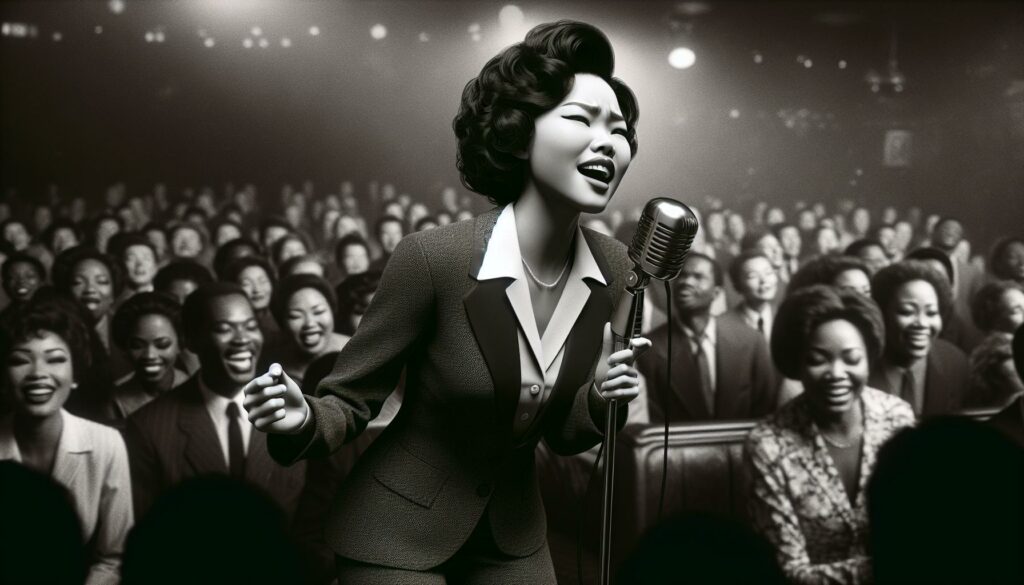I’ve always believed that old school soul music carries the raw essence of human emotion. From the sultry vocals of Aretha Franklin to the smooth harmonies of The Temptations this genre captured the spirit of an era that forever changed the landscape of American music. Growing up in the presence of vinyl records and crackling radio stations I discovered how soul music of the 1960s and 70s transformed simple melodies into powerful statements of love struggle and triumph. The genre’s influence extends far beyond its time blending gospel R&B and blues into a sound that still resonates with listeners today. When you hear those first notes of Sam Cooke’s “”A Change Is Gonna Come”” or Marvin Gaye’s “”What’s Going On”” you’ll understand why this music continues to touch hearts and inspire new generations of artists.
- Old school soul music emerged during the 1950s-1970s, with Motown Records and Stax Records leading the revolution in American popular culture.
- Key pioneers like Ray Charles, Sam Cooke, James Brown, and Otis Redding established soul’s signature sound by blending gospel, R&B, and blues elements.
- Distinctive elements of soul music include gospel-influenced vocals, complex horn arrangements, synchronized choreography, and emotional delivery.
- Soul music played a crucial role in the Civil Rights Movement, with artists using their platforms to address racial inequality through powerful anthems.
- The genre’s influence continues today through neo-soul and contemporary artists who incorporate traditional soul elements while preserving authentic instrumentation and recording techniques.
Old School Soul Music
Soul music reached its pinnacle between 1950-1970, establishing itself as a dominant force in American popular culture. The genre’s evolution during this period created a musical revolution that transformed the entertainment industry.
Motown’s Revolutionary Sound
Motown Records defined the Detroit sound with its polished production techniques and sophisticated arrangements. Berry Gordy Jr. launched the label in 1959 with an $800 loan, creating a hit-making empire that produced iconic artists like The Supremes, Stevie Wonder and The Four Tops. The label’s signature elements included:
- Synchronized choreography by groups like The Temptations
- Complex vocal harmonies featuring multiple backing vocalists
- Prominent bass lines performed by James Jamerson
- Orchestra-style arrangements with strings and horns
- Professional artist development programs for performers
Stax Records and Southern Soul
Stax Records emerged from Memphis with a grittier, more raw approach to soul music. The label’s recording studio, a converted movie theater, gave birth to the distinctive Memphis sound characterized by:
- Horn-driven arrangements from the Memphis Horns
- Heavy emphasis on Hammond organ and electric guitar
- Gospel-influenced vocal performances
- Live studio recording techniques
- Integration of white and Black musicians during segregation
- Otis Redding with “”(Sittin’ On) The Dock of the Bay””
- Sam & Dave performing “”Soul Man””
- Isaac Hayes creating extended soul symphonies
- Booker T. & the M.G.’s instrumental classics
- Wilson Pickett’s energetic recordings
| Label Comparison | Motown | Stax |
|---|---|---|
| Location | Detroit, MI | Memphis, TN |
| Founded | 1959 | 1957 |
| Signature Sound | Polished, orchestral | Raw, stripped-down |
| Key Producers | Holland-Dozier-Holland | Steve Cropper, Isaac Hayes |
| Peak Period | 1964-1972 | 1965-1968 |
Key Pioneers of Classic Soul
Soul music’s foundation rests on the shoulders of pioneering artists who transformed the American musical landscape with their innovative styles and powerful performances. These trailblazers created the blueprint for soul music’s signature sound and emotional depth.
Ray Charles and Sam Cooke
Ray Charles merged gospel, R&B and jazz to create his distinctive soul sound in 1954 with “”I Got A Woman.”” His innovative piano playing and gravelly vocals influenced countless artists, while his crossover hits like “”Georgia On My Mind”” (1960) reached #1 on both R&B and pop charts. Sam Cooke transitioned from gospel to secular music in 1957 with “”You Send Me,”” establishing the smooth, polished vocal style that defined soul music. His songs “”A Change Is Gonna Come”” (1964) and “”Chain Gang”” (1960) showcased sophisticated arrangements that elevated soul music’s compositional standards.
James Brown and Otis Redding
James Brown revolutionized soul music with his dynamic stage presence and creation of funk through songs like “”Papa’s Got a Brand New Bag”” (1965). His emphasis on the “”one”” beat and complex rhythmic patterns established new possibilities for soul arrangements. Otis Redding brought raw emotion and intensity to soul music through his work at Stax Records from 1962-1967. His recordings “”(Sittin’ On) The Dock of the Bay”” and “”Try a Little Tenderness”” demonstrated soul’s ability to convey deep emotional experiences through passionate vocal delivery.
| Artist | Signature Song | Peak Chart Position | Year |
|---|---|---|---|
| Ray Charles | “”Georgia On My Mind”” | #1 Billboard Hot 100 | 1960 |
| Sam Cooke | “”You Send Me”” | #1 Billboard Hot 100 | 1957 |
| James Brown | “”Papa’s Got a Brand New Bag”” | #8 Billboard Hot 100 | 1965 |
| Otis Redding | “”(Sittin’ On) The Dock of the Bay”” | #1 Billboard Hot 100 | 1968 |
Signature Elements of Old School Soul
Old school soul music combines distinct musical elements that create its unmistakable sound. These elements work together to produce the genre’s emotional intensity and rhythmic power.
Gospel-Influenced Vocals
The foundation of soul vocals stems directly from African American gospel traditions. Lead singers employ techniques like melisma (singing multiple notes on one syllable), call-and-response patterns with backup vocalists, and emotional crescendos that build to powerful climaxes. Artists incorporate spiritual fervor into secular themes, as demonstrated in Aretha Franklin’s “”I Never Loved a Man (The Way I Love You)”” and Wilson Pickett’s “”In the Midnight Hour.””
- Baritone saxophone riffs providing rhythmic foundation
- Trumpet and trombone sections playing synchronized melodic lines
- String sections adding harmonic depth and emotional resonance
- Complex counter-melodies between instrumental sections
- Strategic use of dynamic contrasts between verses and choruses
| Instrumental Element | Role in Soul Music | Notable Examples |
|---|---|---|
| Horn Section | Rhythmic punctuation | “”Mr. Big Stuff”” – Jean Knight |
| String Section | Emotional texture | “”The Tracks of My Tears”” – Smokey Robinson |
| Rhythm Section | Groove foundation | “”I Can’t Help Myself”” – Four Tops |
Soul Music’s Cultural Impact
Soul music transcends mere entertainment, serving as a powerful force for social change throughout American history. Its influence extends from political movements to cultural expressions that continue to resonate today.
Civil Rights Movement Connection
Soul music emerged as the soundtrack of the Civil Rights Movement, with artists using their platforms to address racial inequality. Sam Cooke’s “”A Change Is Gonna Come”” (1964) became an anthem for civil rights activists, reaching #31 on the Billboard Hot 100. James Brown’s “”Say It Loud – I’m Black and I’m Proud”” (1968) promoted Black pride nationwide, peaking at #10 on the charts. Nina Simone’s “”Mississippi Goddam”” (1964) directly confronted racial segregation, while Curtis Mayfield’s “”People Get Ready”” (1965) offered hope through spiritual metaphors.
| Artist | Song | Year | Peak Chart Position |
|---|---|---|---|
| Sam Cooke | A Change Is Gonna Come | 1964 | #31 |
| James Brown | Say It Loud – I’m Black and I’m Proud | 1968 | #10 |
| Curtis Mayfield | People Get Ready | 1965 | #14 |
Fashion and Dance Culture
Soul music revolutionized fashion trends through iconic stage wear and signature dance moves. The Supremes popularized sequined gowns while The Temptations introduced coordinated suit-and-tie combinations with precise choreography. Dance crazes like:
- The Twist (popularized by Chubby Checker’s 1960 cover)
- The Mashed Potato (linked to James Brown’s “”Mashed Potatoes U.S.A.””)
- The Funky Chicken (inspired by Rufus Thomas’s 1970 hit)
- The Robot (showcased in performances by The Jackson 5)
- Sharkskin suits
- Platform shoes
- Colorful print dresses
- Wide-brimmed hats
- Bell-bottom pants
Modern Soul Music’s Roots in Classic Soul
Modern soul artists draw inspiration from classic soul’s foundational elements, creating a contemporary sound that honors its origins. Prominent modern soul musicians like Amy Winehouse incorporated the raw emotion of 1960s soul into songs like “”Back to Black”” (2006), which features the signature Motown backbeat and horn arrangements.
Neo-soul emerged in the 1990s as a direct descendant of classic soul, with artists integrating traditional elements:
- D’Angelo blends vintage recording techniques with modern production in “”Brown Sugar”” (1995)
- Erykah Badu incorporates jazz-influenced arrangements reminiscent of Nina Simone
- Maxwell adapts the falsetto styling of Curtis Mayfield in “”Ascension (Don’t Ever Wonder)”” (1996)
Contemporary artists continue to reference classic soul techniques:
- Leon Bridges replicates Sam Cooke’s vocal patterns in “”Coming Home”” (2015)
- Anderson .Paak uses live instrumentation similar to Stax recordings
- Silk Sonic channels The Delfonics’ harmonies in “”Leave the Door Open”” (2021)
The influence of classic soul extends to production methods:
| Classic Element | Modern Application | Example Track |
|---|---|---|
| Analog Recording | Daptone Records Studios | Sharon Jones “”100 Days, 100 Nights”” |
| Horn Sections | Mark Ronson Productions | “”Uptown Funk”” |
| Live Band tracking | Black Pumas Sessions | “”Colors”” |
Modern soul artists maintain connections to their predecessors through authentic instrumentation, emphasizing emotional delivery over digital perfection. Studios like Brooklyn’s Daptone Records preserve vintage recording techniques, capturing performances on analog equipment to achieve the warmth of classic soul recordings.
Old school soul music isn’t just a genre – it’s a testament to human creativity and resilience that continues to move audiences today. I’m constantly amazed by how these timeless melodies and heartfelt lyrics have shaped modern music while preserving their authentic emotional power.
From the polished sounds of Motown to the raw energy of Stax the legacy of soul music lives on through contemporary artists who honor its roots. The genre’s profound impact on social change fashion and dance culture proves it’s more than just music – it’s a cultural phenomenon that has forever changed the American musical landscape.
When I listen to these classic recordings I’m reminded that great music transcends time. Soul music’s enduring influence serves as a bridge between generations connecting us through its universal language of love hope and human experience.



